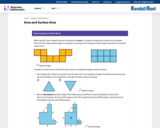
Family facing 6th Grade math unit focusing on area and surface area.
- Subject:
- Geometry
- Mathematics
- Material Type:
- Unit of Study
- Provider:
- Illustrative Mathematics
- Date Added:
- 11/17/2020

Family facing 6th Grade math unit focusing on area and surface area.
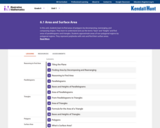
In this unit, students learn to find areas of polygons by decomposing, rearranging, and composing shapes. They learn to understand and use the terms “base” and “height,” and find areas of parallelograms and triangles. Students approximate areas of non-polygonal regions by polygonal regions. They represent polyhedra with nets and find their surface areas.
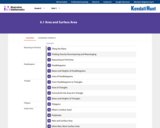
Student facing 6th Grade math unit focusing on area and surface area.
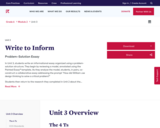
In Unit 3, students write an informational essay organized using a problem-solution structure. They begin by reviewing a model, annotated using the Painted Essay® template. As they analyze the model, students, in pairs, co-construct a collaborative essay addressing the prompt “How did William use design thinking to solve a critical problem?”
Students then return to the research they completed in Unit 2 about the problem and solution of their choosing, taking time to review (and add to, as needed) their ideas in light of insights gleaned from the collaborative essay practice. Students prepare for the assessment by completing a writing planner as they did for their collaborative essay. For the Mid-Unit 3 Assessment, students independently write an essay about the problem and solution they researched in Unit 2, answering the question “How was design thinking used to solve a critical problem?”
Students begin preparing for the performance task by reassembling their research into an interactive and visual problem-solution display. They prepare for this Solution Symposium by rehearsing their answers to two prompts posed by their audience: (1) how was design thinking used to solve this problem? and (2) how were habits of character used to solve this problem? For the End of Unit 3 Assessment, students synthesize their learning about all of the different innovators researched to engage in an academic discussion around how habits of character help solve critical problems. Students are coached to discuss the topic collegially, using appropriate tone, volume, and eye contact. During the discussion, students are assessed on their ability to pose and respond to questions using the evidence they have gathered, analyze it in light of the habits of character, and elaborate on the contributions of their peers.

In Unit 3, students begin their work with literary argument essay writing. They apply the Painted Essay® structure to this new type of writing, evaluating how it changes when applied to writing a literary argument. As they have done previously, students deconstruct the model and complete a collaborative practice argument essay. In each lesson, students look at a discrete aspect of the argument essay model and practice using it in their own writing. In response to an open-ended prompt, they brainstorm possible reasons to support two different positions. They collect textual evidence for both sides of the argument and connect the evidence to the reasons with sound reasoning. Finally, students determine their strongest argument and make a claim. Using these skills practiced with a partner, students are then prepared to independently plan and draft an argument essay to answer the prompt: What is the most viable solution to Cal’s dilemma of whether to return to Challagi Indian Industrial School?
After writing their essay for the mid-unit assessment, students are ready to move towards the culmination of the module, an audio museum exhibit featuring the voices of American Indian boarding school students. First, students will select a text (a poem, personal narrative, etc.) written by a survivor of the boarding schools, one that resonates with them personally. They respond to this reading by writing a preface to provide context and a reflection to explain why the text is meaningful. Using the recording application first introduced in Unit 2, students record themselves reading their preface, text, and reflection aloud using proper and respectful intonation, volume, and pacing. This recording will be used for both the performance task and the End of Unit 3 Assessment. Students record two versions of their performance task contribution and then reflect on and self-assess each for their volume, pronunciation, and language use. Students use their observations about their first attempt to improve their performance on the second attempt. Finally, they listen to a peer’s second recording and reflect on and paraphrase the content and assess their peer’s volume, pronunciation, and language use in that second performance.
To showcase their recordings, the class prepares listening stations where guests of the audio museum can listen and learn about American Indian boarding schools. Learning from the module and the performance task synthesizes in a concluding whole class discussion about the importance of honoring diverse experiences and perspectives.
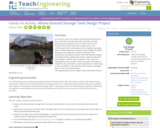
At this point in the unit, students have learned about Pascal's law, Archimedes' principle, Bernoulli's principle, and why above-ground storage tanks are of major concern in the Houston Ship Channel and other coastal areas. In this culminating activity, student groups act as engineering design teams to derive equations to determine the stability of specific above-ground storage tank scenarios with given tank specifications and liquid contents. With their floatation analyses completed and the stability determined, students analyze the tank stability in specific storm conditions. Then, teams are challenged to come up with improved storage tank designs to make them less vulnerable to uplift, displacement and buckling in storm conditions. Teams present their analyses and design ideas in short class presentations.

Students are provided with an introduction to above-ground storage tanks, specifically how and why they are used in the Houston Ship Channel. The introduction includes many photographic examples of petrochemical tank failures during major storms and describes the consequences in environmental pollution and costs to disrupted businesses and lives, as well as the lack of safety codes and provisions to better secure the tanks in coastal regions regularly visited by hurricanes. Students learn how the concepts of Archimedes' principle and Pascal's law act out in the form of the uplifting and buckling seen in the damaged and destroyed tanks, which sets the stage for the real-world engineering challenge presented in the associated activity to design new and/or improved storage tanks that can survive storm conditions.
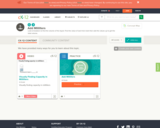
This short video and interactive assessment activity is designed to give fifth graders an overview of measuring capacity (metric units).

This short video and interactive assessment activity is designed to give fifth graders an overview of addition and subtraction in kilograms and grams.

This short video and interactive assessment activity is designed to give fifth graders an overview of addition and subtraction of weights (metric units).

This short video and interactive assessment activity is designed to teach fifth graders about adding and subtracting money with pictures in columns.

This short video and interactive assessment activity is designed to teach fifth graders about adding and subtracting money using words.

This short video and interactive assessment activity is designed to teach third graders about one step addition and subtraction - word problems.

This short video and interactive assessment activity is designed to teach fifth graders about addition in kilograms.

This short video and interactive assessment activity is designed to teach fifth graders about addition of compound unit capacities - word problems.

This short video and interactive assessment activity is designed to teach third graders about addition of sequential capacities - word problems.

Convert metric measurements to U.S. Measurements and the reverse, too. Easy to follow tables have sections for area, length, mass,temperature and volume.

This short video and interactive assessment activity is designed to teach fifth graders about total distance without unit conversion (metric units).

This short video and interactive assessment activity is designed to teach fifth graders about adding and subtracting lengths (metric units).

Students are introduced to Pascal's law, Archimedes' principle and Bernoulli's principle. Fundamental definitions, equations, practice problems and engineering applications are supplied. A PowerPoint® presentation, practice problems and grading rubric are provided.